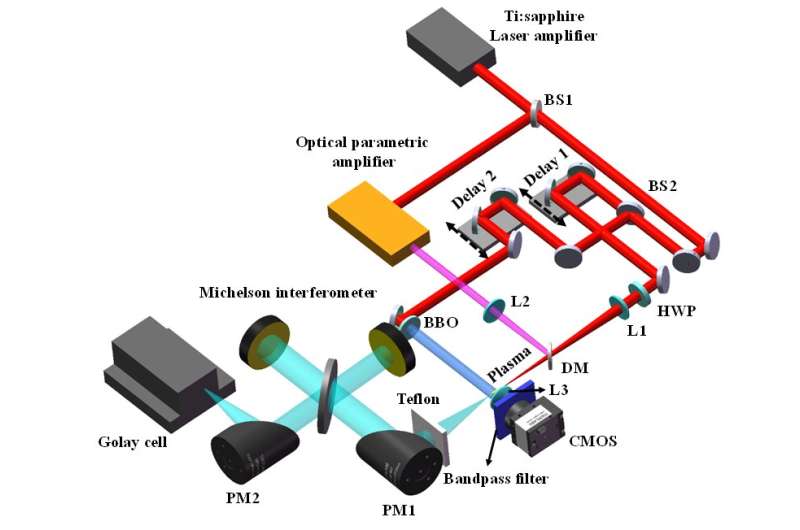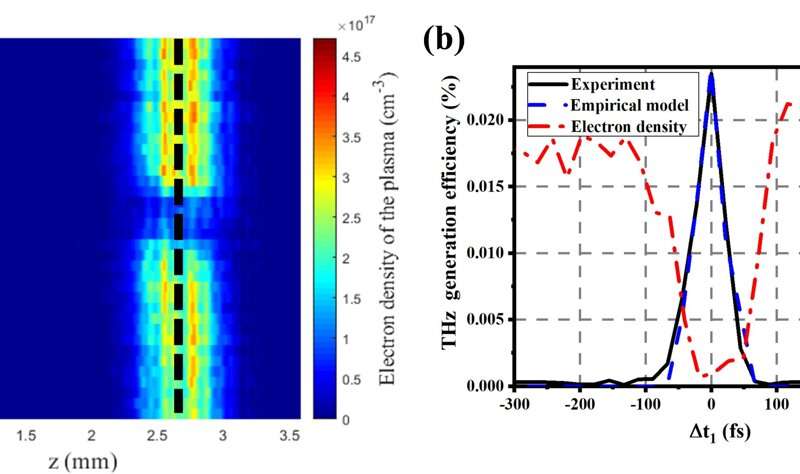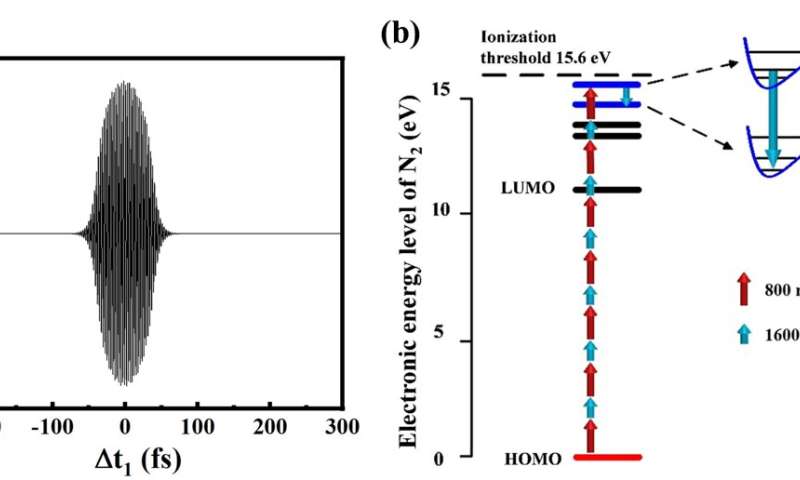Anti-correlated plasma and THz pulse generation during two-color laser filamentation in air

The strong terahertz (THz) waves generated by femtosecond laser pulse induced gas plasma have drawn extensive attention owing to the ultra-wide spectral bandwidth, the high electric field strength, and no material damage threshold. However, the abundant and multi-dimensional cross-scale light-matter interactions during filamentation intertwine, interact and restrict mutually, which not only puts the physical mechanism of THz radiation under debate, but also limits the optimization techniques of THz wave generation.
Although the THz wave generated from the two-color laser field filamentation has been most cited to be positively correlated with the air plasma density, the research conducted by Prof. Weiwei Liu's group from Nankai University and Prof. Hiroaki Misawa's group from Hokkaido University has shown a negative correlation between the radiated THz intensity and the plasma density during 1600 nm + 800 nm two-color laser filamentation. The electron capture of the excited nitrogen gas molecule in its excited states is believed to be the cause of the depressed plasma density, while the augmented THz radiation is ascribed to the higher electron drifting velocity.
By tuning the time delay between 1600 nm and 800 nm lasers, the plasma density is measured and found a minimum value near zero delay. The negative correlation between the plasma density and the THz wave radiation intensity further reveals that the THz radiation intensity exhibits maximum at the minimum plasma density.
The electronic energy level of the nitrogen molecule is modeled with DFT method. Since the photon energy of a 1600 nm laser is 0.78 eV and the vibrational energy of nitrogen molecule is 0.2 eV, a 1600 nm laser may cause resonance when the electron energy gap is about 0.78±0.2 eV. When nitrogen gas is excited by a 1600 nm and a 800nm two-color field simultaneously, the electron will be pumped to LUMO+7 energy level.
-

(a) The relationship between the plasma density of the filament and the time delay of the two-color field (Δt1); (b) The generated THz efficiency as a function of Δt1 in the experiment is shown as the black solid line while the simulated THz relative intensities of the empirical model is represented as blue dashed line. Free electron density with different retardations was measured on the filament axis at z=2.7 mm and shown as red dash-dotted line. Credit: Ultrafast Science -

(a) Calculated electronic energy level of nitrogen molecule; (b) Variation of net current Jnet as a function of Δt1. Credit: Ultrafast Science
Moreover, the energy difference between LUMO+6 and LUMO+7 corresponds to the energy of 1600 nm photon. Therefore, a 1600 nm laser may induce resonance between these two energy levels to trap electrons, which leads to the decrease in plasma density at zero delay. It is also noted that, though the free electron density in the plasma has a minimum value when Δt1 is small, it is still possible for Jnet to reach peak, thereby radiating the highest THz pulse energy. The drifting velocity accelerated by the two-color laser field has been confirmed to play a dominant role during the THz pulse generation.
The research results not only clarify the relative importance of electron drifting velocity and plasma density in THz radiation of filaments, but also point out the limitations of the traditional photocurrent model. The results are of great significance for optimizing the two-color laser filamentation to generate strong THz waves. Additionally, new questions on optical ionization mechanism in filaments are put forward.
The research was published in Ultrafast Science.
More information: Zhiqiang Yu et al, Anti-Correlated Plasma and THz Pulse Generation during Two-Color Laser Filamentation in Air, Ultrafast Science (2022). DOI: 10.34133/2022/9853053
Provided by Ultrafast Science




















